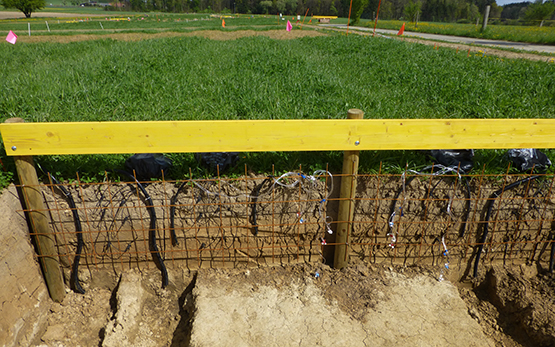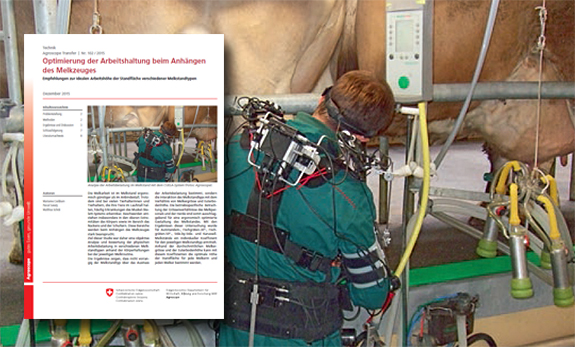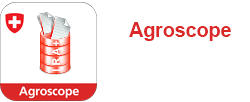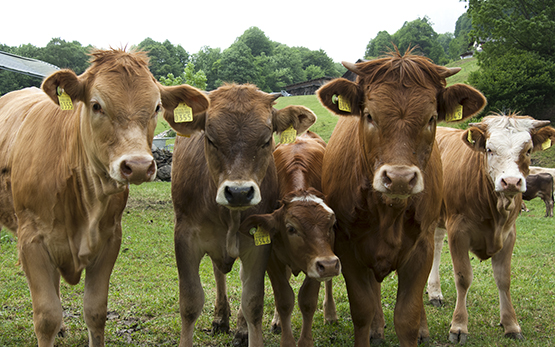Remund D., Liebisch F., Liniger H., Heinimann A., Prasuhn V.
The origin of sediment and particulate phosphorus inputs into water bodies in the Swiss Midlands – A twenty-year field study of soil erosion.
Catena, 203, 2021, 1-15.
Perich G., Meyer P., Wieser A., Liebisch F.
Proximal and drone based hyperspectral sensing for crop nitrogen status detection in historic field trials.
In: 11th Workshop on Hyperspectral Image and Signal Processing: Evolutions in Remote Sensing (WHISPERS). 24 march, Ed. IEEE, Online meeting. 2021, 1-5.
Perich G., Meyer P., Wieser A., Liebisch F.
Proximal and drone based hyperspectral sensing for crop nitrogen status detection in historic field trials.
In: Workshop on Hyperspectral Image and Signal Processing: Evolution in Remote Sensing. 24.03., online. 2021, 1-7.
Frossard E., Liebisch F., Hgaza V. K., Kiba D. I., Kirchgessner N., Müller L., Müller P., Pouya N., Ringger C., Walter A.
Evaluation of image-based phenotyping methods for measuring water yam (Dioscorea alata L.) growth and nitrogen nutritional status under greenhouse and field conditions.
Agronomy, 11, (2), 2021, 1-18.
Liebisch F., Spiess E., Epper C., Mayer J.
Nährstoffbilanzierung – Zwischen effizienter Düngepraxis und Umweltmonitoring.
In: Landwirtschaft und Umwelt: messen – bewerten – handeln 8. Nachhaltigkeitstagung Agroscope. 28.01., online - Agroscope. 2021, 1-17.
Spiess E., Liebisch F.
Nährstoffbilanz der schweizerischen Landwirtschaft für die Jahre 1975 bis 2018.
Agroscope Science, 100, 2020.
Hirte J., Liebisch F.
Phosphor im Boden - Erkenntnisse aus 30 Jahren Feldforschung.
In: BDU Herbsttagung. 11.11., Agridea (online). 2020.
Hirte J., Richner W., Orth B., Liebisch F., Flisch R.
Yield response to soil test phosphorus in Switzerland: Pedoclimatic drivers of critical concentrations for optimal crop yields using multilevel modelling.
Science of the Total Environment, online, 2020, 1-16.
Argento F., Anken T., Abt F., Vogelsanger E., Walter A., Liebisch F.
Site-specific nitrogen management in winter wheat supported by low-altitude remote sensing and soil data.
Precision Agriculture, online, 2020, 1-23.
Pretto A., Aravecchia S., Burgard W., Chebrolu N., Dornhege C., Falck T., Fleckenstein F.V., Fontenla A., Imperoli M., Khanna R., Liebisch F., Lottes P., Miloto A., Nardi D., Nardi S. e altri
Building an aerial-ground robotics system for precision farming: An adaptable solution.
IEEE Robotics & Automation Magazine, 28, (3), 2020, 29-49.
Aasen H., Kirchgessner N., Walter A., Liebisch F.
PhenoCams for field phenotyping: Using very high temporal resolution digital repeated photography to investigate interactions of growth, phenology and harvest traits.
Frontiers in Plant Science, 11, (593), 2020, 1-16.
Yuzugullu O., Lorenz F., Fröhlich P., Liebisch F.
Understanding fields by remote sensing: soil zoning and property mapping.
Remote Sensing, 12, 2020, 1-20.
Groher T., Heitkämper K., Walter A., Liebisch F., Umstätter C.
Status quo of adoption of precision agriculture enabling technologies in Swiss plant production.
Precision Agriculture, online, (8 May), 2020, 1-24.
Zemek O., Neuweiler R., Richner W., Liebisch F., Spiess E.
Abschätzung und Reduktion der Nitratauswaschung im Gemüsebau.
Agrarforschung Schweiz, 11, 2020, 76-81.
altre lingue:
francese | inglese
Stumpf F., Schneider M. K., Keller A., Mayr A., Rentschler T., Meuli R. G., Schaepmann M., Liebisch F.
Spatial monitoring of grassland management using multi-temporal satellite imagery.
Ecological Indicators, 113, (Article number 106201), 2020, 1-12.
Anderegg J., Yu K., Aasen H., Walter A., Liebisch F., Hund A.
Spectral vegetation indices to track senescence dynamics in diverse wheat germplasm.
Frontiers in Plant Science, 1, (10), 2020, 1-20.
Argento F., Anken T., Liebisch F., Walter A.
Crop imaging and soil adjusted variable rate nitrogen application in winter wheat.
In: Precision Agriculture '19 - Proceedings of the 12th European Conference on Precision Agriculture. 8-11 July, Ed. ECPA, Montpellier, France. 2019, 1-8.









